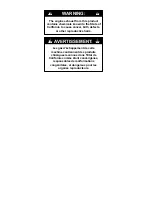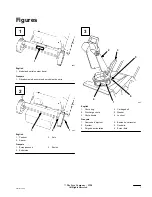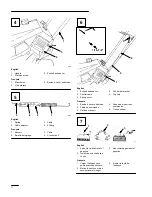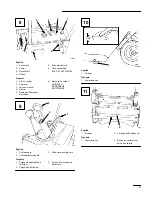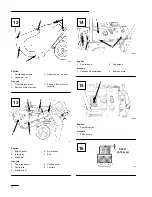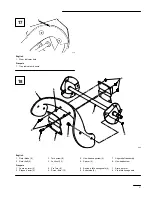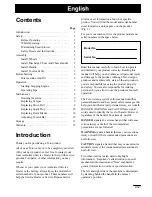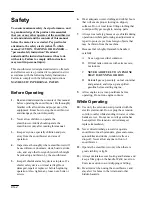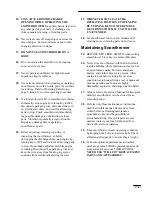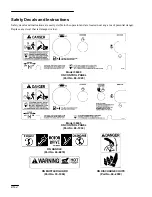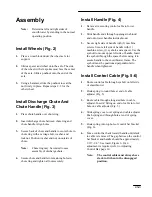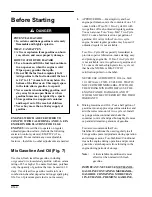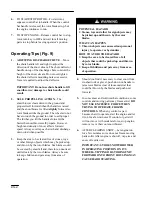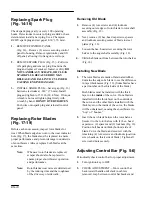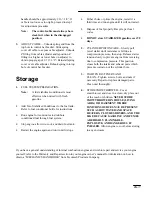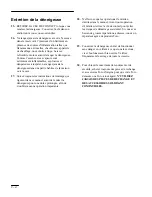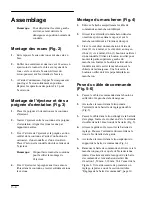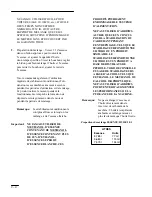
EN–8
6.
TO START/STOP ROTOR—To start rotor,
squeeze control bar to handle. When the control
bar handle is released, the rotor blades stop, but
the engine continues to run.
7.
TO STOP ENGINE—Release control bar to stop
rotor, turn key to OFF and wait for all moving
parts to stop before leaving operator’s position.
Operating Tips (Fig. 9)
1.
ADJUSTING DISCHARGE CHUTE—Move
the chute handle left and right to adjust the
direction of the snow stream. The chute deflector
handle on top of the discharge chute controls the
height of the snow stream. Do not overtighten
the chute deflector mounting nuts so excessive
force is required to adjust the deflector.
IMPORTANT: Do not use chute handle to lift
snowthrower; damage to chute handle could
result.
2.
SELF–PROPELLING ACTION—The
snowthrower clears down to the ground and
propels itself forward when the handle is raised
and the snowthrower is tilted slightly forward so
rotor blades strike the ground. The wheels do not
have to touch the ground in order to self-propel.
The further you tilt the handles forward, the
faster the snowthrower self-propels. However,
height and density of snow affects forward
speed. Always overlap each swath and discharge
downwind when possible.
3.
Keep the area to be cleared free of stones, toys,
or other foreign objects which may be picked up
and thrown by the rotor blades. Such items could
be covered by snowfall and, therefore, unnoticed
until struck by the rotor blades. Always be sure
to keep children and pets away from area of
operation.
POTENTIAL HAZARD
•
Stones, toys and other foreign objects may
be picked up and thrown by the rotor
blades.
WHAT CAN HAPPEN
•
Thrown objects can cause serious personal
injury to operator or bystanders.
HOW TO AVOID THE HAZARD
•
Keep the area to be cleared free of all
objects that could be picked up and thrown
by rotor blades.
•
Keep all children and pets away from area
of operation.
4.
Should you find it necessary to clear snow from
crushed rock or gravel, push down on handle to
raise rotor blades clear of loose material that
could be thrown by the blades and push unit
forward.
5.
In some snow and cold weather conditions, some
controls and moving parts may freeze solid. DO
NOT USE EXCESSIVE FORCE WHEN
TRYING TO OPERATE FROZEN
CONTROLS. When any control or part
becomes hard to operate, start the engine and let
it run for a few minutes. If control or part still
will not move with moderate force, stop engine,
remove ice or thaw out snowthrower.
6.
AFTER CLEARING SNOW—Let engine run
for a few minutes so ice does not freeze moving
parts solid. After engine is shut off, wipe ice and
snow off entire unit.
IMPORTANT: STORE SNOWTHROWER
IN OPERATING POSITION ON ITS
WHEELS. TIPPING OR STORING UNIT
FORWARD ONTO FRONT HOUSING MAY
CAUSE HARD STARTING.
Summary of Contents for CCR 1000 38400
Page 36: ......

